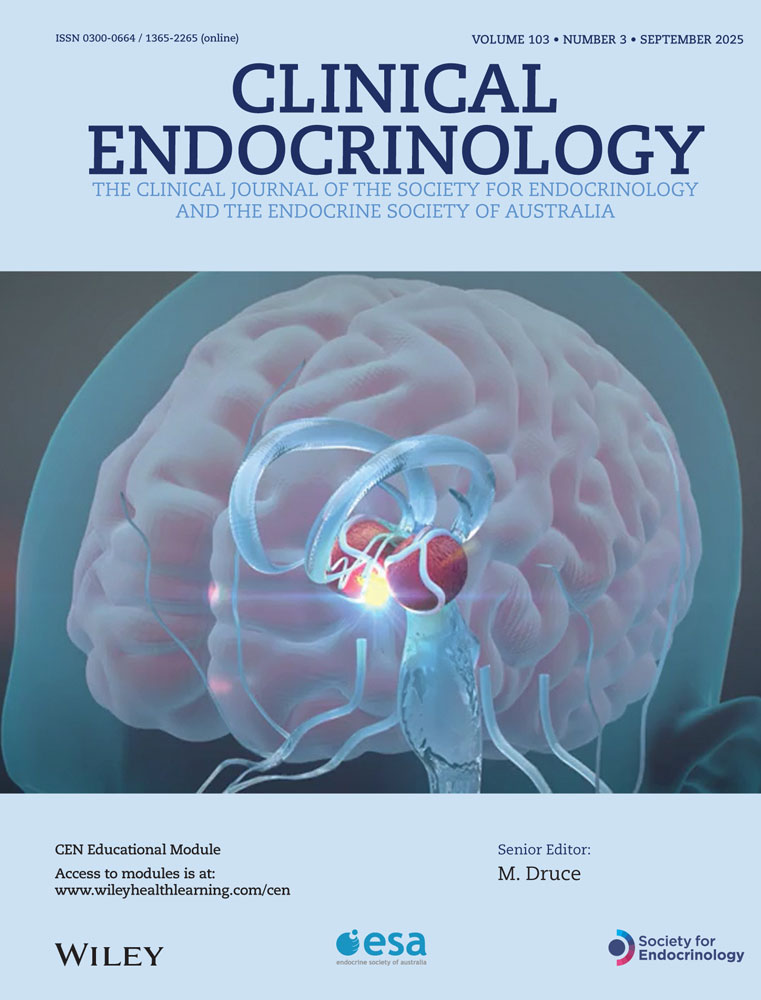Age-dependent decline in cortisol levels and clinical manifestations in patients with ACTH-independent Cushing's syndrome
Abstract
OBJECTIVE
Adrenocortical cells change with age in both subcellular morphology and level of steroidogenesis. This study evaluates the influence of aging on hypercortisolism and clinical manifestations in patients with ACTH-independent Cushing's syndrome due to a cortisol-secreting adrenal adenoma (CS).
DESIGN
Restrospective study.
PATIENTS
Thirty-six (33 females and 3 males) with CS. 31 healthy controls were age- and sex-matched to CS patients.
MEASUREMENT
Patient age at diagnosis was compared to the degree of hypercortisolism and clinical manifestations. The degree of hypercortisolism was estimated using serum cortisol levels and urinary free cortisol excretion. Positive clinical manifestations were quantified using 12 symptoms and signs which resulted in a clinical score for each patient. Endogenous creatinine clearance, estimated disease duration and gender were analysed as possible factors affecting adenoma-secreated cortisol.
RESULTS
Patient age correlated negatively with serum cortisol level (r = −0.417, P = 0.0107, n = 36) and urinary excretion of free cortisol (r = −0.613, P = 0.0002, n = 31). Analysis of Spearman's rank correlation showed that the clinical score decreased with age (ρ = −0.631, P = 0.0004, n = 33). Oedema, weakness/myopathy, hirsutism, striae and psychological changes were infrequent symptoms in the elderly. Using stepwise multiple regression analysis, we estimated the clinical score (Y) by factors of serum cortisol levels (X1:nmol/l), age (X2: years of age) and gender (X3: gender; female = 1, male = 0), i.e. Y = 4.771 + 0.004 X1− 0.064 X2+ 2.548 X3 (r = 0.743, P < 0.0001, n = 33). Results suggested that aging both suppressed cortisol secretion and repressed manifestations directly as an independent factor, although its direct effect may be weak.
CONCLUSIONS
Our findings indicated the importance of age as a factor modulating hormonal levels and possible clinical manifestations in patients with cortisol-secreting adenomas.




